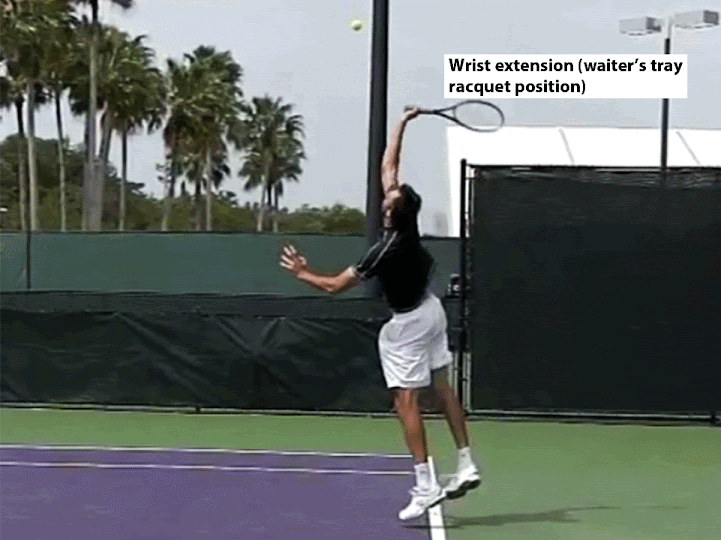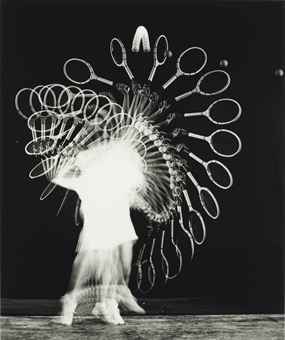This doesn't end all discussion at all. Put your arm in the position going up to contact like Ivo with the palm facing your ear. Arm can be nearly extended like Ivo's too. Then keep wrist position frozen and simply extend arm, pronate forearm and move arm forward. You can move into the exact contact position without any wrist snap simply by pronating the forearm and extending the arm while moving it up and forward.
Personally, I think a loose wrist with some movement is normal but I don't think a violent snap is the correct concept either. The driving force comes from shoulder, arm and forearm rotation with the wrist adding a little.
But, just for discussion, you most definitely can make the Ivo service motions depicted in these photos without any or practically no wrist movement.
Pronation of the forearm and rotating the arm outwardly from the shoulder will move the racket into the contact position quite easily without any wrist snap. Shadow stroke it right now from where you sit and it can easily be demonstrated.
Also, the wrist is laid back to varying degrees on most pro forehands too. Especially on inside out FHs as the wrist lags more to direct the ball on the inside out path. There are hundreds of stills photos that show this. Granted there are exceptions but majority of contact positions have a degree of wrist lay back at contact. Go here and scroll around for a lot of high speed stills showing laid back wrist at contact:
http://blog.tennisspeed.com/ Scroll down main page or review analysis on menu on right (part 9, part 10, etc) for various still photos.









